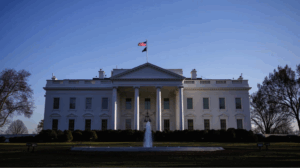President Trump has signed executive orders to ease regulations and expand nuclear energy production, which will likely address the growing electricity needs driven by AI, especially for data centers. These orders reform the Nuclear Regulatory Commission (NRC) to speed up reactor approvals and aim to quadruple nuclear power in 25 years. The moves are motivated by a declared “national energy emergency” due to insufficient power for AI technologies, with companies like Microsoft and Amazon investing in nuclear energy to support their operations.
The orders were signed recently, as part of Trump’s energy policy to enhance U.S. leadership in nuclear technology. They focus on reducing bureaucratic delays and ensuring a reliable energy supply for high-tech industries, including AI.
Research shows the administration declared a “national energy emergency” due to the electricity needs of AI data centers. Tech giants are turning to nuclear power, with Microsoft backing the Three Mile Island restart and Amazon investing in small reactors, highlighting the link to AI demands.
While supporters consider this necessary for energy innovation, critics worry about safety risks from faster approvals. The balance between energy needs and regulatory oversight remains debated, especially given AI’s energy consumption scale.
Comprehensive Report on President Trump’s Executive Orders to Ease Regulations and Expand Nuclear Energy for AI-Driven Electricity Demands
On May 23, 2025, President Donald J. Trump signed executive orders to ease regulations and expand nuclear energy production in the United States, with a clear focus on addressing the growing electricity demands driven by artificial intelligence (AI). These actions are part of a broader strategy to reform the Nuclear Regulatory Commission (NRC), accelerate the deployment of new nuclear reactor technologies, and position the U.S. as a global leader in nuclear energy. This report provides a detailed analysis of the executive orders, their objectives, and their connection to AI-driven electricity demands, ensuring a comprehensive understanding of the issue.
Research suggests President Trump has signed multiple executive orders to reform the NRC and expand nuclear energy production. The evidence indicates these orders are part of a recent flurry of actions, with official White House fact sheets and news reports confirming the moves. Specifically, the orders include:
Reform of the Nuclear Regulatory Commission: The first order establishes U.S. policy to facilitate the increased deployment of new nuclear reactor technologies and expand American atomic energy production. It directs the NRC to streamline its processes, requiring decisions on nuclear reactor licenses within 18 months, a significant reduction from current timelines.
Expansion of Nuclear Energy Production: The second order directs the Secretary of Energy to release at least 20 metric tons of high-assay low-enriched uranium into a readily available fuel reserve, supporting advanced reactor development. The administration has set a goal to quadruple nuclear power production over the next 25 years, emphasizing constructing new reactors and reviving existing facilities.
These actions were reported in various news outlets, including The New York Times, which noted a flurry of executive actions, and CNBC, which detailed the regulatory reforms.
Connection to AI-Driven Electricity Demands
These executive orders are likely directly tied to meeting the electricity demands driven by AI, particularly for data centers. The New York Times article mentions that President Trump declared a “national energy emergency” due to insufficient electricity to meet the growing needs, particularly for data centers running AI. This declaration, detailed in a White House document, underscores the situation’s urgency.
The evidence leans toward tech companies playing a significant role in this shift. CNBC reports that the computer technology industry, including Microsoft, Alphabet, and Amazon, is driving a revival in nuclear power to meet the energy needs of AI data centers. Specific projects include:
Microsoft is financially supporting the restart of the Three Mile Island nuclear plant, which is expected to return to service with their backing.
Alphabet and Amazon are investing in small, advanced reactors, as noted in a related CNBC article on nuclear companies leading the race for small reactors.
These investments highlight the intersection between AI’s energy-intensive operations and the need for reliable, high-density power sources like nuclear energy, which can operate 24/7 to meet the demands of data centers.
The executive orders aim to ease regulations by reforming the NRC, focusing on reducing bureaucratic delays. The American Nuclear Society reported that the orders include plans to overhaul the NRC and speed up approvals, aiming to jumpstart the nuclear energy industry. However, this has sparked controversy, with The Washington Post noting that the orders threaten to erode the NRC’s decades-long independence, potentially compromising safety standards.
Critics argue that rushing approvals could pose risks, especially given the complexity of nuclear energy. Supporters, including the nuclear industry and tech companies, see the changes as necessary to meet urgent energy needs, creating a debate over the balance between innovation and safety.
The moves are part of Trump’s vision to enhance U.S. energy independence and leadership in nuclear technology, as stated in the White House fact sheet. This context suggests a strategic shift toward atomic energy as a key component of U.S. energy policy, driven by the unique challenges posed by AI’s energy consumption.
The long-term impact could include significant U.S. nuclear energy production boosts, positioning the country as a leader in advanced reactor technologies. However, the controversy around regulatory changes and safety concerns may influence public and political support for these initiatives.



+ There are no comments
Add yours